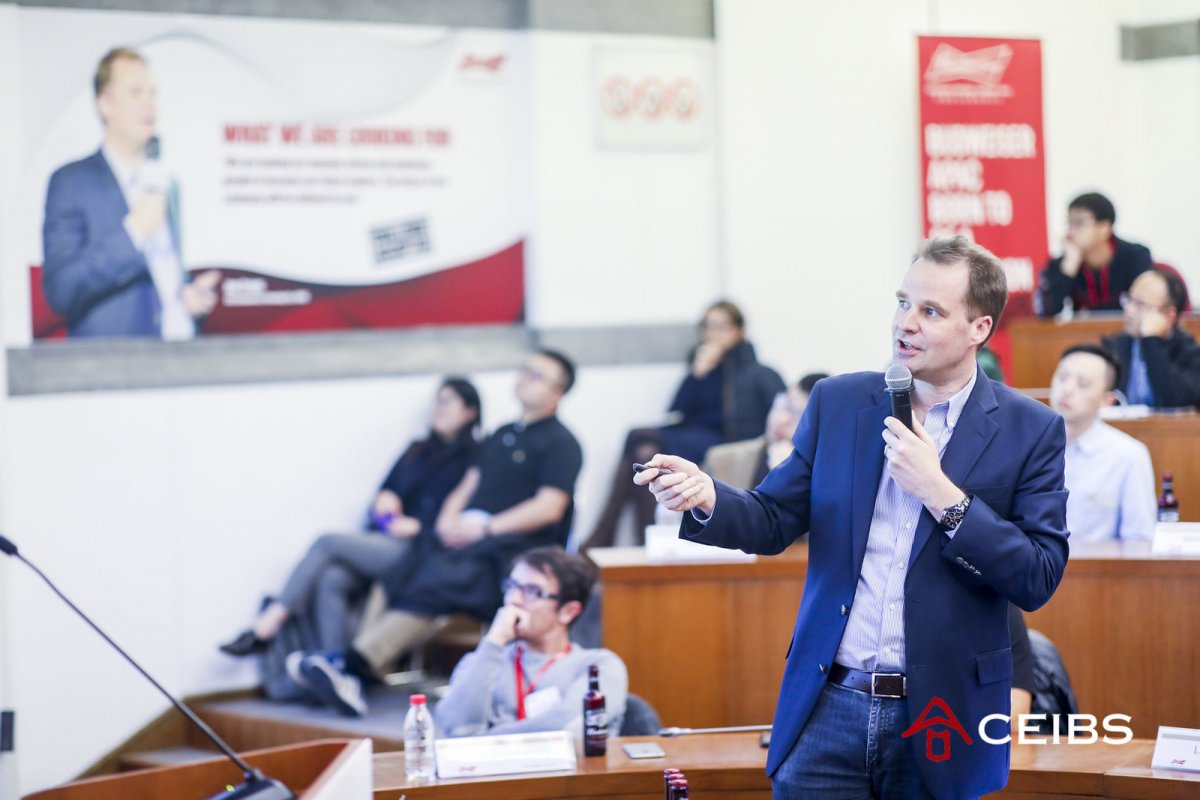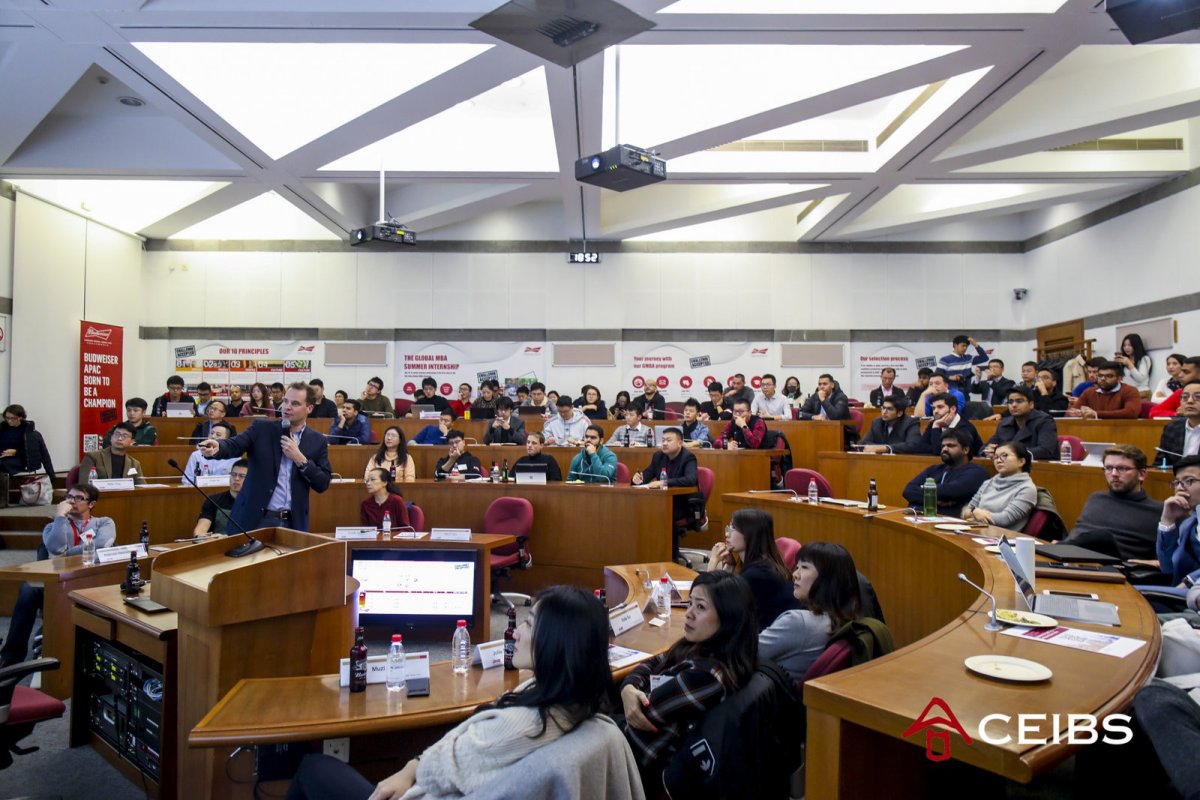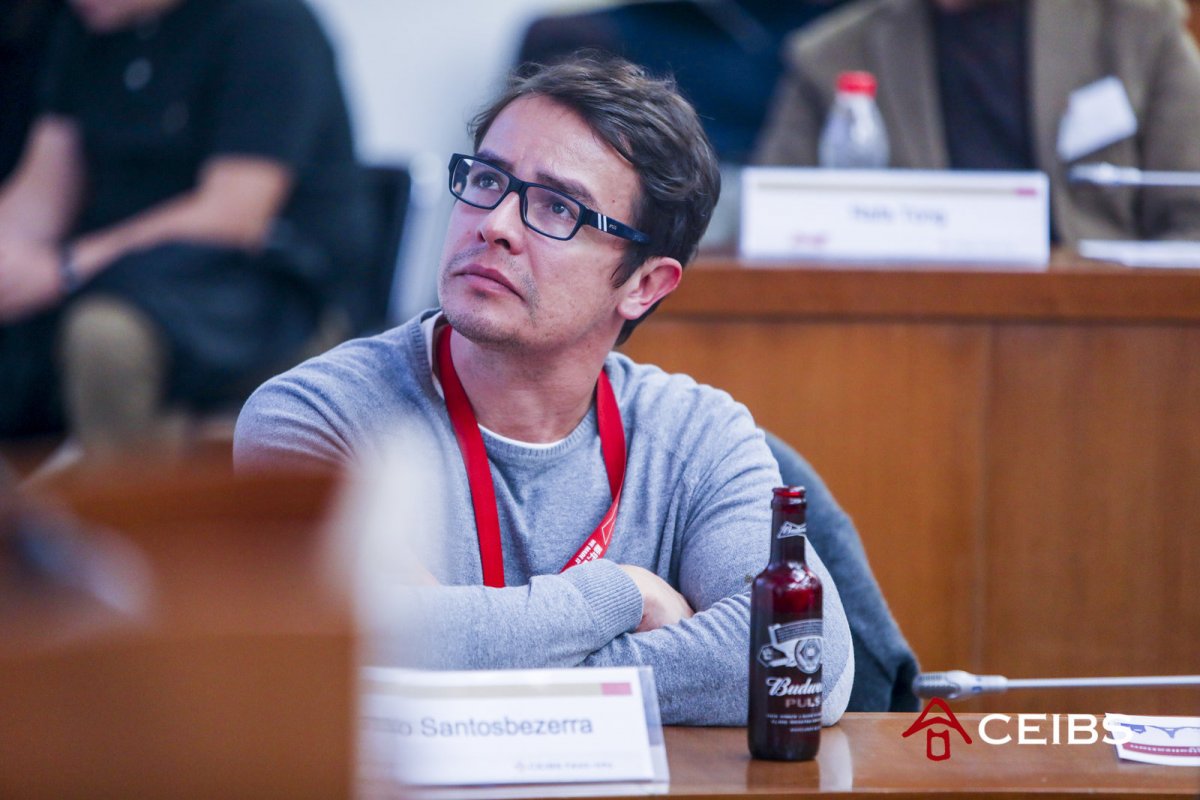CEIBS Executive Forum Explores CPG Industry Digitisation
November 18, 2019 – CEIBS’ Shanghai campus played host to nearly 150 guests this evening for a special CEIBS Executive Forum talk by Jan Craps, CEO and Executive Director Budweiser APAC & President APAC Zone AB InBev at Anheuser-Busch InBev, on the theme of Business through Digitalisation. Mr. Craps’ presentation examined four pillars related to digitization – consumers, customers, supply chain, and operations – and how, as one of the world’s largest consumer packaged goods (CPG) companies, AB InBev is leveraging new technologies to better drive business growth in China and Asia.
One of the first steps towards capitalising on digitisation, he explained, involves engaging with different ecosystems – such as those created by platforms such as Alibaba, Tencent and Meituan – which can provide valuable third-party data about consumers, their likes, dislikes and other behaviours.
“Consumers are exposed to all these different influences and it’s quite amazing how they’re connected. They’re spending more and more time on their screens, but it is also making their lives a lot more convenient than in the past,” Mr. Craps told the audience. “Also, it allows us to target consumer audiences in a much more granular way than we could in the past.”
Building a consumer data hub starts with traffic, and another way AB InBev is driving more traffic directly to itself is through the launch of a new app called BudSpace. In just five months since its launch in China, BudSpace has acquired 3.5 million users – or about 17,000 new users each day.
In addition to marketing beer, Mr. Craps continued, the app gives users access to different functionalities, including cross-over merchandise sales and event promotions. More importantly, it also gives AB InBev access to the insights it needs in order to engage with consumers in more meaningful ways.
“If you’re real football lover, we don’t want to target you with food propositions. And if you really like music, we can offer you tickets for EDM festivals,” he said. “But, of course, we need conversion and other insights which again help us segment and target messages and make us more relevant for consumers.”
At the same time, Mr. Craps explained during the forum, the company works with various partners to collect customer data about the markets they operate in. One example of this is a company AB InBev works with which supplies checkout systems to about 80,000 restaurants across China, providing it with roughly two million sets of data each week.
“It’s not consumer data, but it is customer data, restaurant level data, and we can see on a daily basis what is getting sold – which beers, which liquors, which dishes, what time of the day, what gets bought together, how much people buy,” he said. “If we do a certain promotion, for example, we can see how it drives certain sales.”
Moreover, Mr. Craps explained, once this this information is collected, the company employs a team of analysts to look at the data and come up with relevant and actionable insights for its business.
“We can then cascade those to our salesforce, for example, so they visit the right restaurants, and it brings the intelligence of data into the salesforce,” he said. “You can imagine how powerful this is already today and how it will continue to build its power into the future.”
With more than 50 breweries and 60 distribution centres outputting roughly 15 billion litres of beer in Asia each year, Mr. Craps added that AB InBev is also looking to digitisation to improve the way in which it produces, warehouses and ships its products.
“Our breweries already have a lot of technology – any big can line, packaging line or brewery tanks, they’re already very digitised and automated to a certain extent, but they’re not really connected,” he said. “You can programme a can line, but if you want it to talk to the brewing kettle or talk to the forklift in the warehouse, that doesn’t exist today.”
But, things are changing. Where today it requires about forty to fifty screens to run a brewery, Mr. Craps stated, tomorrow it will be possible to do this from a single tablet device and AB InBev is already working towards building what the company calls ‘connected breweries’.
“You can build management systems that don’t just find problems after they happen, but also apply basic AI machine learning techniques to predict problems before they happen,” he said. “You can send operators or technicians to the line before the problems happen based on past patterns.”
As the head of AB InBev’s APAC Zone, Mr. Craps also leads a division which employs more than 30,000 people in China, East Asia, South Asia and Southeast Asia. With this in mind, he stressed that technology plays an important role in how the company recruits and retains new job candidates.
“Today, we can interview thousands of people just by comparing short questionnaires that they take on their computers or phones,” he said. “Using machine learning, we can differentiate, with a very good learning pattern, for the recruitment process to support the candidates before they come into our company for an interview.”
Ultimately, while it is only one piece of the puzzle, Mr. Craps pointed out that digitisation has had a profound impact on how change gets ingrained in various processes and how people at AB InBev work together to solve problems. At the same time, he said, technology is reshaping the company by helping them build more of their capabilities in house.
“For example, ten years ago, we outsourced a lot of our creative work and anything that was digital we ended up using agencies, but today we in-source most of that,” Mr. Craps stated. “We still work with our agencies for strategic campaigns, but anything that requires the development of digital assets and websites, we do it in house.”






















